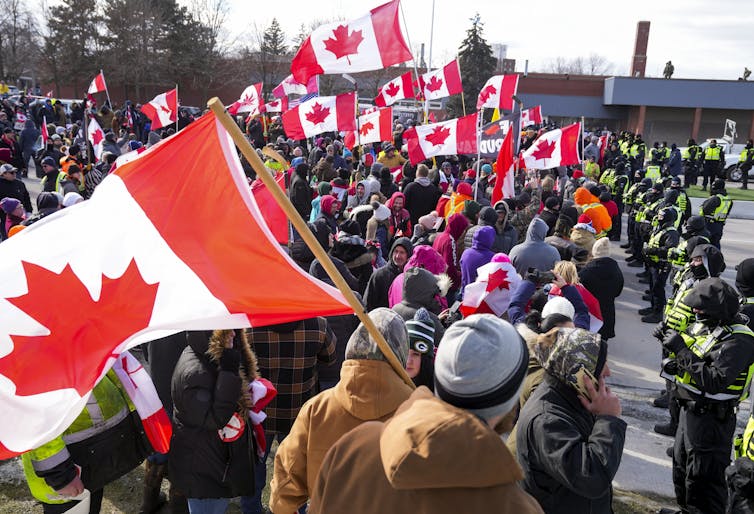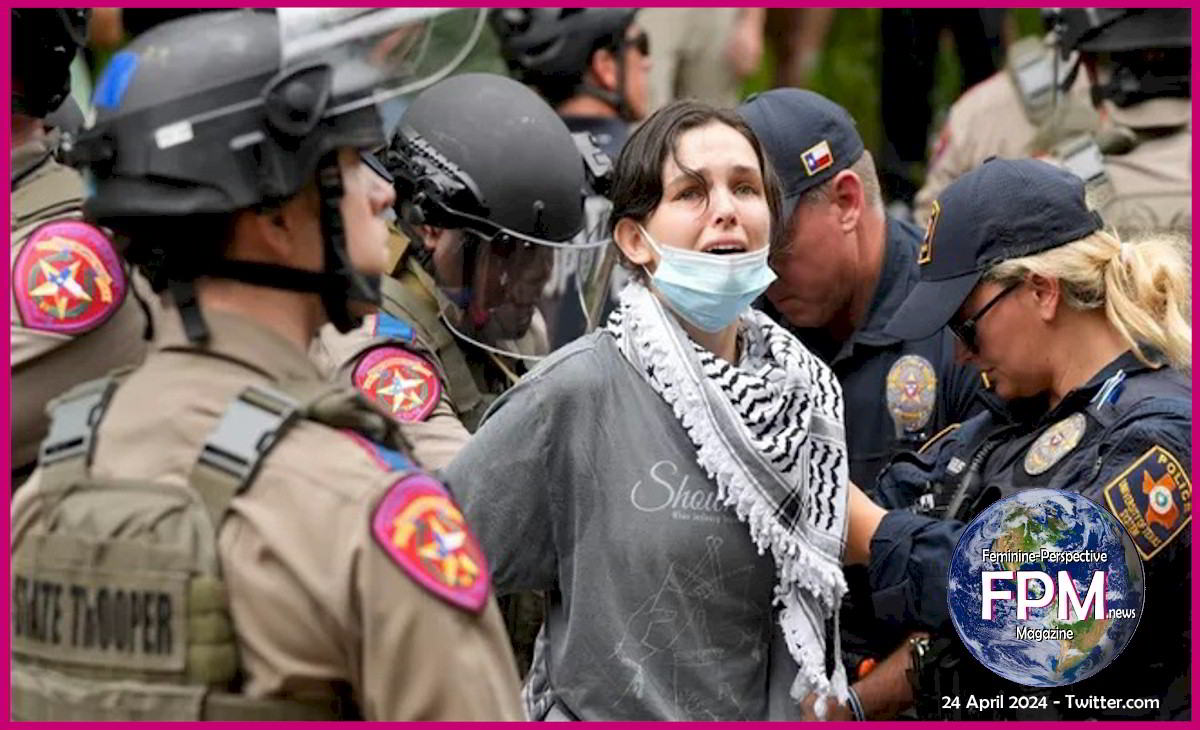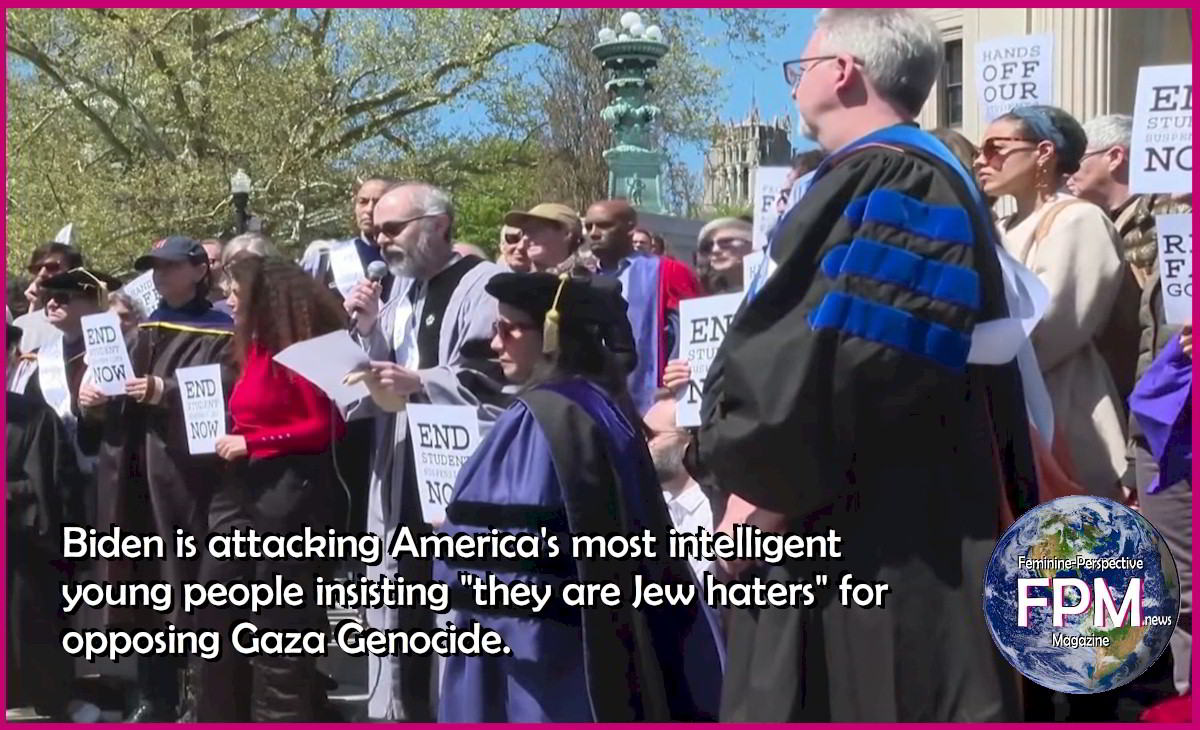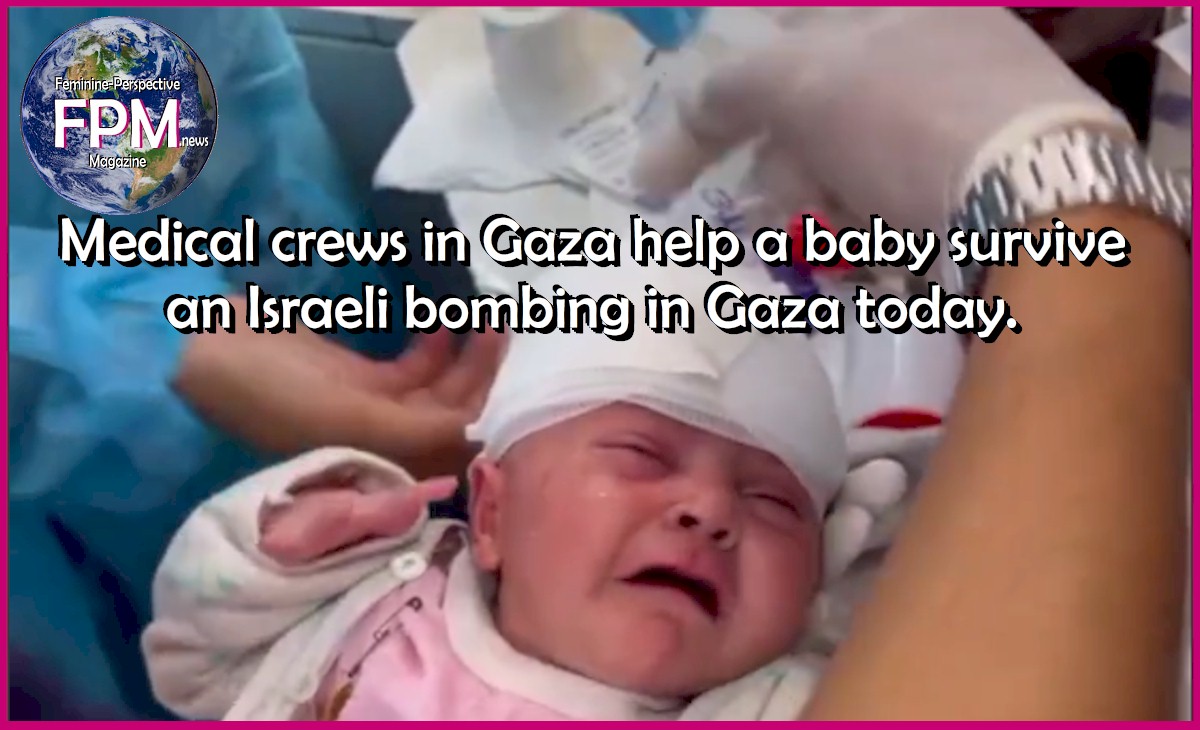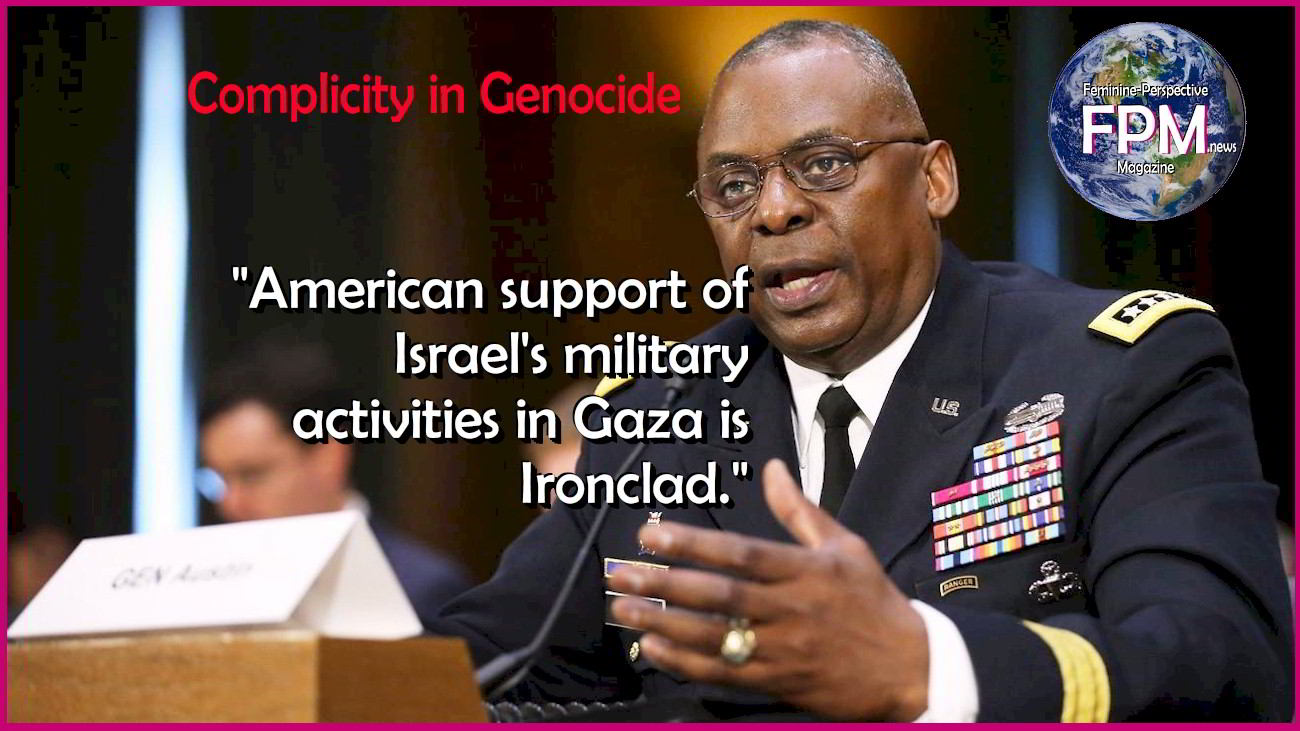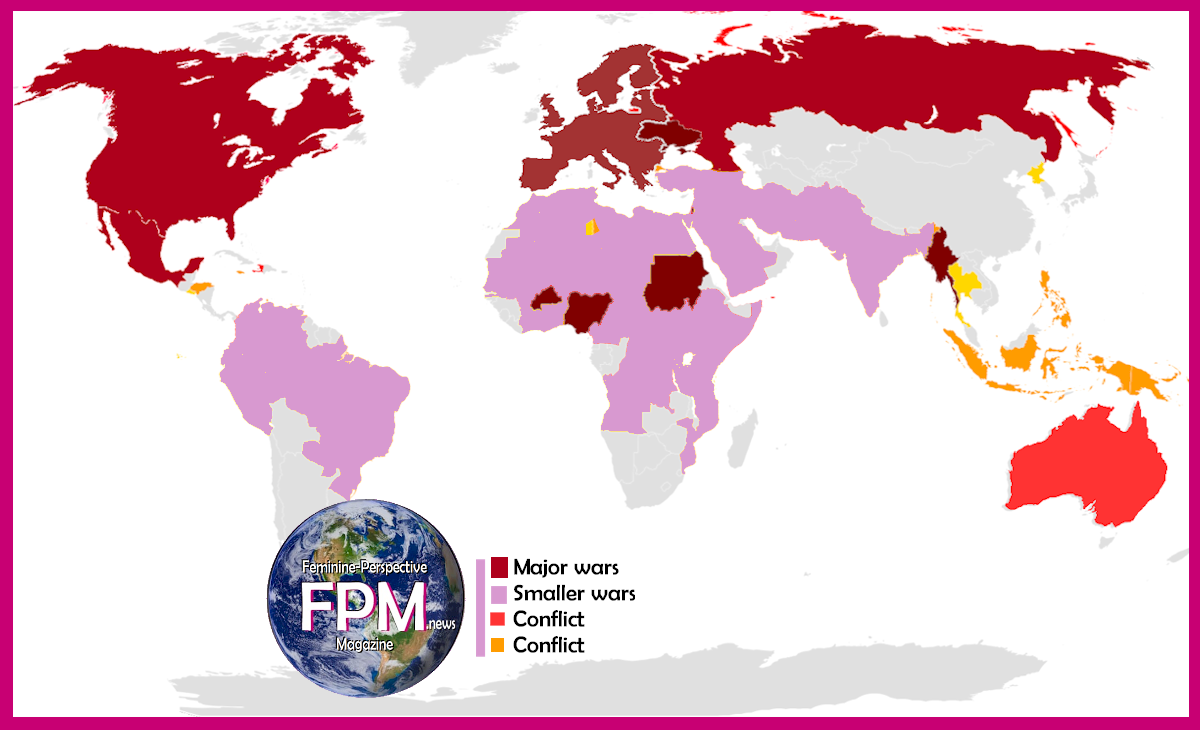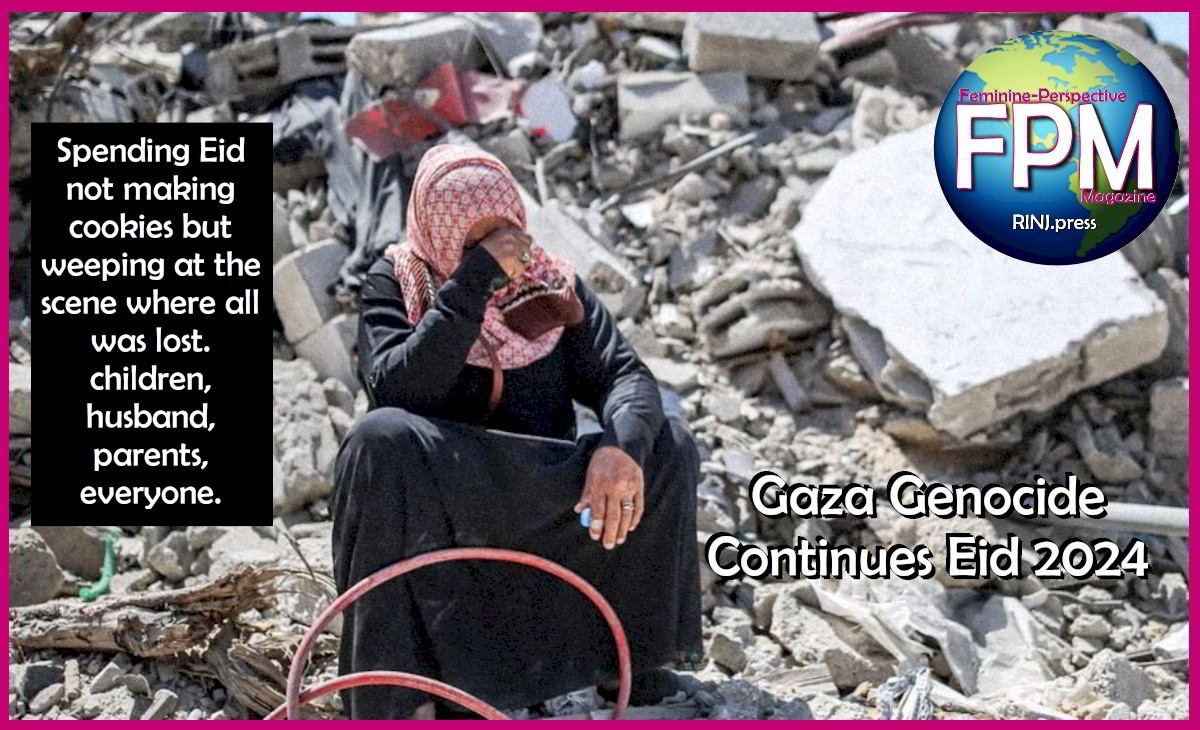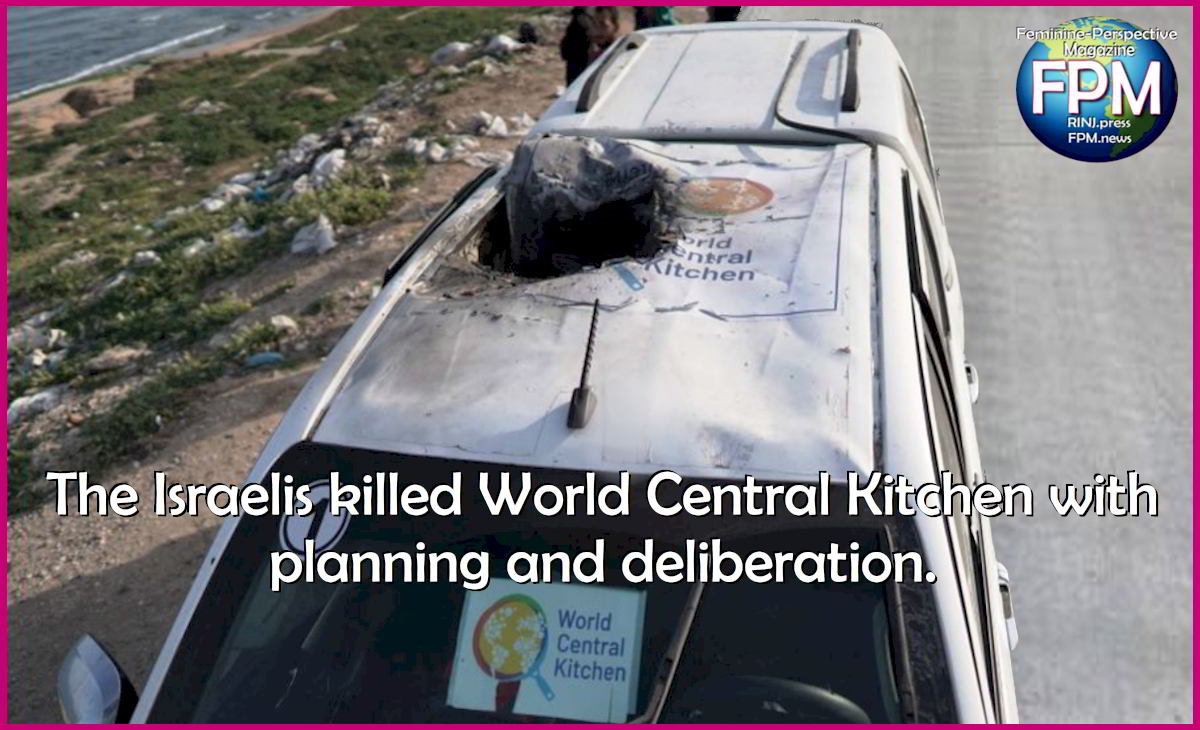Police officers hold a line against protesters at a ‘freedom convoy’ blockade of the Ambassador Bridge in Windsor, Ont., that was broken up soon after police arrived on the scene en masse. People in Ottawa are wondering why their police force hasn’t pushed protesters out of the city or why the military isn’t involved.
THE CANADIAN PRESS/Nathan Denette
By Candyce Kelshall, University of Buckingham
The “freedom movement” is a catch-all term for many segments of intolerant ideologies, including white supremacy, anti-LGBTQ sentiments and anti-Semitism.
This is not a local, grievance-based protest. It’s transnational, with transnational funding, and related to movements in 29 countries.
It could be considered a softly violent movement because the symbols associated with it are hateful and harmful but not quite illegal. Soft violence is defined as the use of symbols and imagery that evoke fear. It enables the theft of culturally appropriate symbology to be misused and co-opted to advance hateful objectives that are intolerant in both nature and intention.
The leaders of the so-called freedom convoy that’s descended upon Ottawa and other Canadian cities have attempted to disassociate themselves from the illegal activity of “fringe elements,” but are themselves involved in or have expressed sentiments related to white supremacy, Islamophobia, anti-authoritarianism, anti-LGBTQ, anti-Semitism and accelerationism, a movement to bring down governments by promoting race wars.
The convoy’s security director has even authored a novel, The New Order of Fear: The Great Reset, that imagines Prime Minister Justin Trudeau’s murder.
The trucker protest is seemingly not only aimed at Canadian COVID-19 policies but also at American regulations. Since January, truckers’ vaccinations are a U.S. requirement for entry, so the “freedom convoy” isn’t really about the Trudeau government or Canada after all.
Supported by the U.S. far right
The Canadian freedom crusaders are promoted by U.S. right-wing media outlets, American politicians, former members of the right-wing, anti-Barack Obama Tea Party — which forms the backbone of Trump’s Make America Great Again movement — and key right-wing influencers who heavily support and fund it. This promotion has included the peddling of misinformation to right-wing audiences.
The siege in Ottawa has already resulted in arrests for carrying weapons in a public meeting, firearms charges, mischief to property and bylaw infractions. But in Ottawa and other Canadian cities, citizens are wondering why there hasn’t been further police action and more arrests.
One person associated with the Ottawa freedom convoy — Jeremy MacKenzie, arrested in Atlantic Canada on multiple firearms charges — has been linked to an affiliate of Canada First, a white supremacist group, as well as the Plaid Army and Diagolon, a North American separatist movement that promotes white supremacist and accelerationist sentiments, ideologies and literature.

THE CANADIAN PRESS/Andrew Vaughan
He spent the first Saturday of the convoy in Ottawa sending social media messages from a hotel room in the company of Canada First members and Derek Harrison, who has been advocating that the “freedom convoy” is Canada’s version of the Jan. 6, 2021, raid on the U.S. Capitol.
MacKenzie’s recent activity includes warning about the imminent crackdown that freedom convoy protesters should expect and plan for. He has also advocated that the gun or rope is the only way to deal with the government.
References to using a “gun or rope” could be an allusion to the Turner Diaries, a fictional blueprint of a plot to overthrow the government and enact a race war often cited by accelerationists.
The involvement and association of these groups demonstrates the breadth of identity-based grievances that underpins the freedom movement.
Civic uprisings require police, not military
Population-centric crises are domestic public order emergencies that impact the state.
They must be managed by law enforcement because law and order is a policing role, whereas the military’s role is to protect the state from external enemies. The military is rarely seen during civic disturbances except as an aid to civil authorities in times of natural and other disasters.
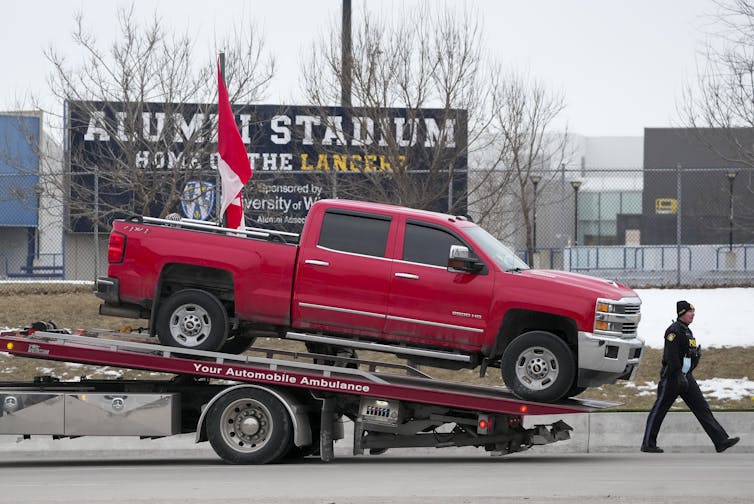
THE CANADIAN PRESS/Nathan Denette
Using the military to address a population-centric problem can escalate the crisis, making the state response enemy-centric and transforming the protesters into enemy combatants.
Participants already see themselves as enemies of states that are treading on their individual rights. Providing an excuse to violently engage with the state would be a gift to an anti-authority movement that already considers itself at war and is literally laying siege to a nation’s capital.

THE CANADIAN PRESS/Adrian Wyld
This movement is fuelled by anti-science vaccine deniers, anti-authority and anti-government sentiment. Its leaders are members of separatist movements. This cannot be ignored when analyzing the motivations behind the convoy.
Even its name is symbolic. The freedom movement is an identity that believes its rights are superior and dominant to the rights of others. They believe these superior rights are being trampled upon at the expense of community well-being.
At its core, this is a selfish movement wrapped in the dialogue of personal freedoms during a community crisis.
Policing responses
To date, police have engaged in community-based policing because the right to protest is fundamental to Canadian democracy.
But protesters cannot unlawfully assemble with impunity. A lack of respect for the rule of law requires decisive action for the benefit of other law-abiding citizens.
Policing this siege is complicated by the number of children living in convoy trucks and the layers of jurisdictional issues involved in overlapping federal, provincial and municipal decision-making. It’s a bureaucratic quagmire skilfully manipulated by the knowledgeable planners of the siege, allegedly former protectors of the state.
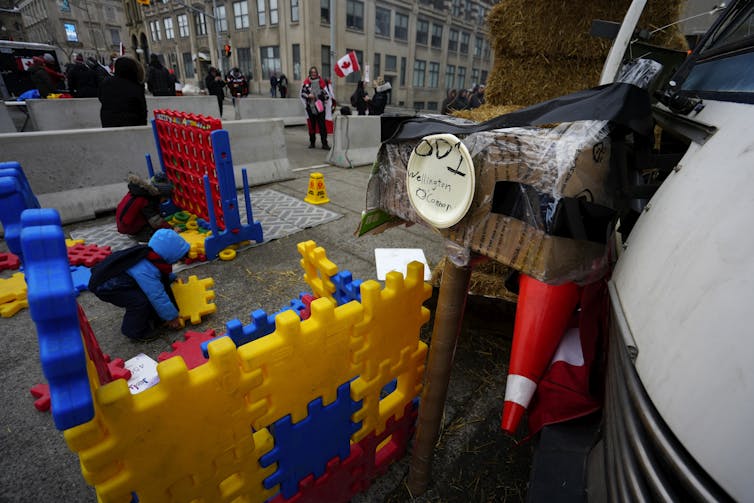
THE CANADIAN PRESS/Justin Tang
Protesters have danced on the Tomb of the Unknown Soldier, urinated on the national war monument, defecated on the front steps of a home that was flying a rainbow flag and spit on residents. The citizens of Ottawa cannot go about their daily lives and have tried to take action by organizing counter-protests in the face of police inaction.
A repressive, authoritarian police response may further marginalize protesters, but allowing the siege to continue is problematic, especially due to an influx of protesters at various sites and increasing online toxicity.
The continuing Ottawa occupation threatens the cohesion of Canada’s social fabric, normalizes the soft violence of increasingly threatening behaviour and gives the illusion that lawlessness is tolerated.
The police have been patient, community-focused and protected the enshrined right to protest, but now must stand up for law and order for everyone.
Candyce Kelshall, Adjunct Professor, Buckingham Centre for Security and Intelligence Studies, University of Buckingham
This article is republished from The Conversation under a Creative Commons license. Read the original article.

